

Mystical Wildlife
Fauna Diversity in Your World
This modification enriches the game world with numerous fantastic creatures that make each biome truly unique. From giant beetles to fluffy lizards - every new inhabitant features its own model and sound effects.
Interaction Features
All added animals can be bred like regular livestock and provide meat when slaughtered. For some species, a special grooming procedure is available using a new tool - the brush, which allows obtaining additional resources.
In version 1.12.2, all creature spawn parameters are fully configurable.
Creature Catalog
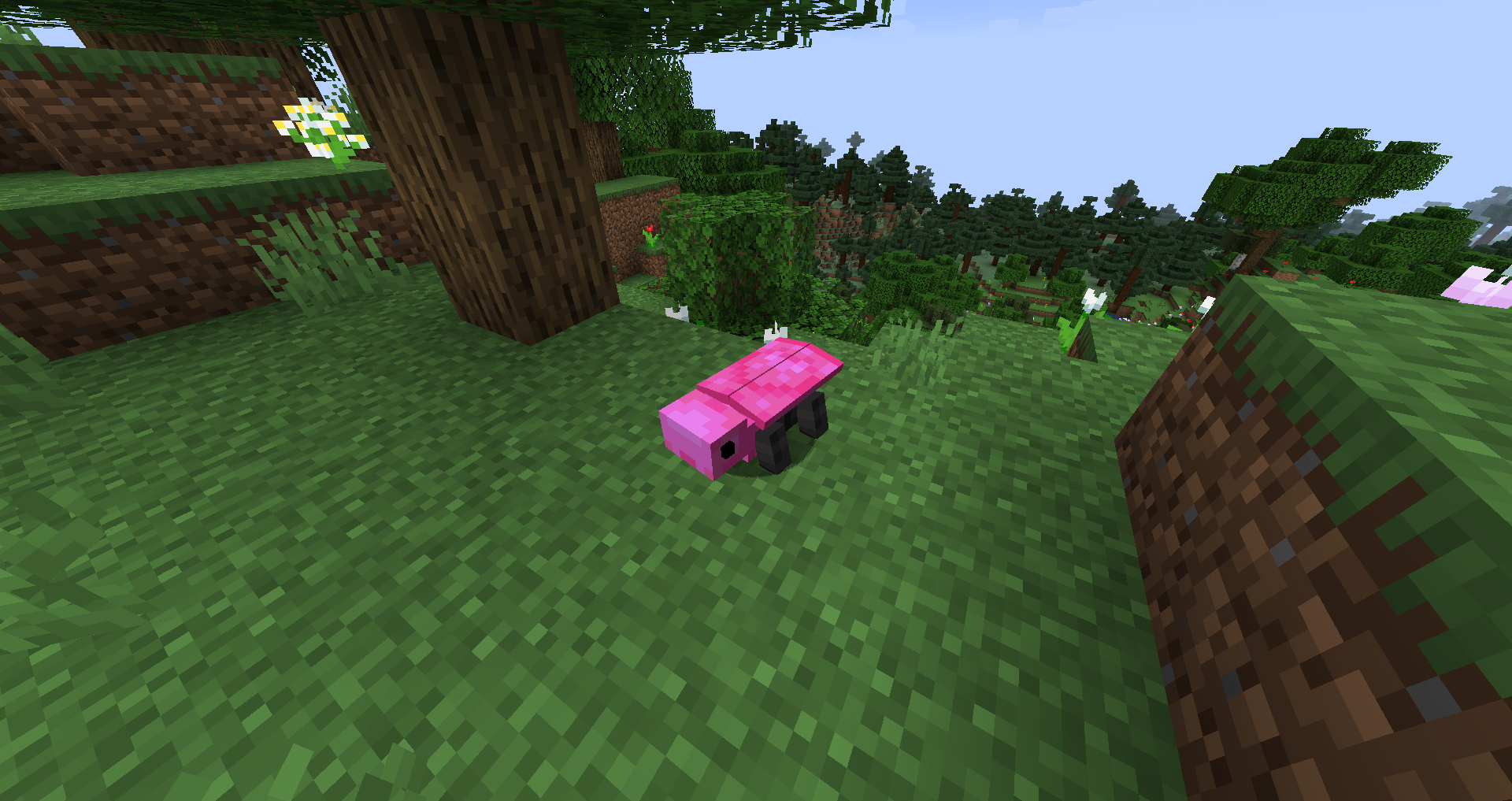 Lovely Cicapteras inhabit flower plains, flower forests, or magical biomes. Their shells serve as a source of pink dye, while live specimens gradually produce Aphrodite Essence. In version 1.14, this substance makes any animal instantly fall in love, while in 1.12 it's used to create potions that accelerate breeding. Breed with sugar.
Lovely Cicapteras inhabit flower plains, flower forests, or magical biomes. Their shells serve as a source of pink dye, while live specimens gradually produce Aphrodite Essence. In version 1.14, this substance makes any animal instantly fall in love, while in 1.12 it's used to create potions that accelerate breeding. Breed with sugar.
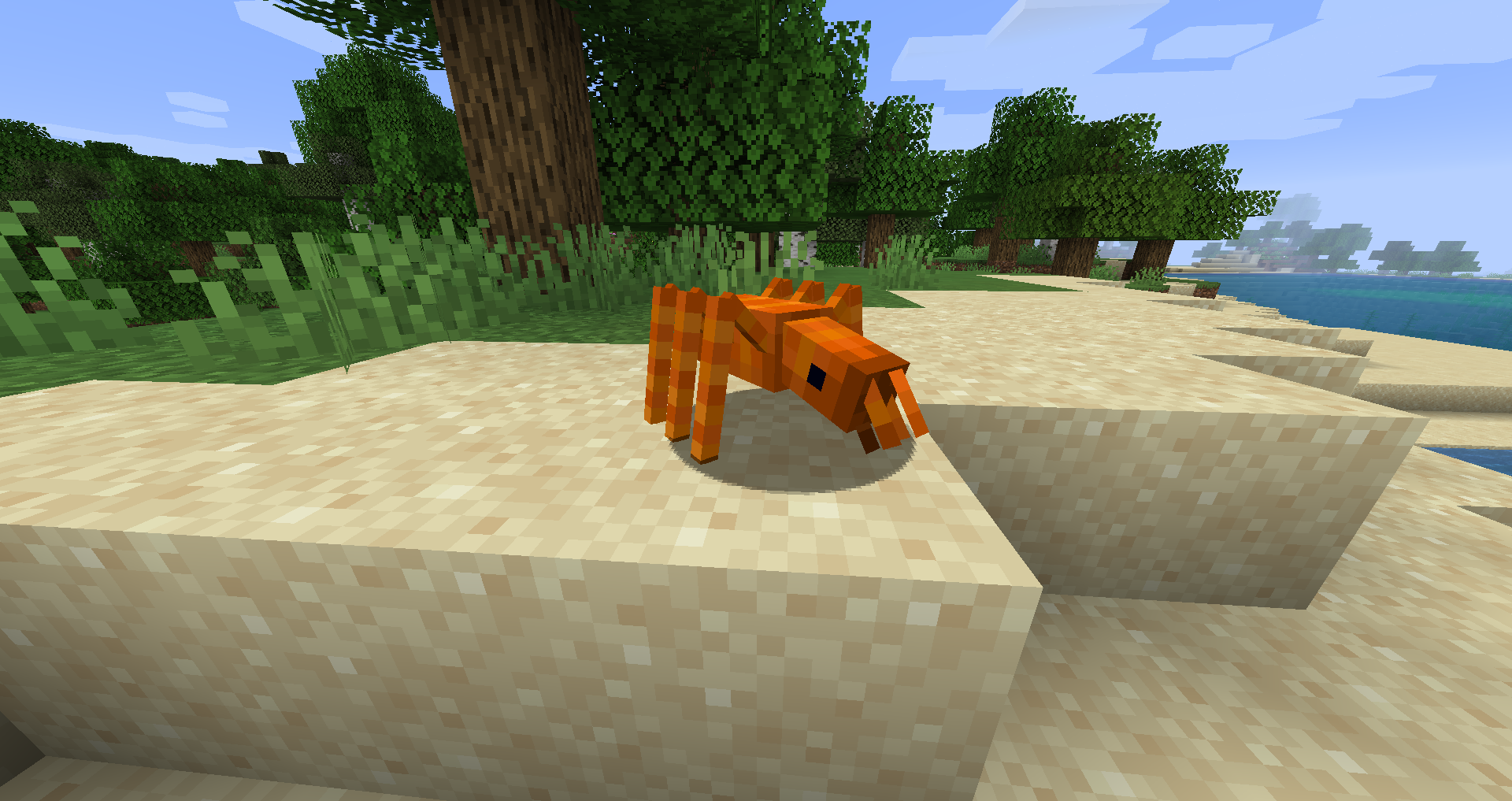 Krills are crustaceans wandering along beaches. Although they have little meat under their shells, they periodically dig through sandy blocks beneath them. Usually find sticks or flint, but sometimes get lucky discovering more valuable materials. Breed with any vanilla seeds.
Krills are crustaceans wandering along beaches. Although they have little meat under their shells, they periodically dig through sandy blocks beneath them. Usually find sticks or flint, but sometimes get lucky discovering more valuable materials. Breed with any vanilla seeds.
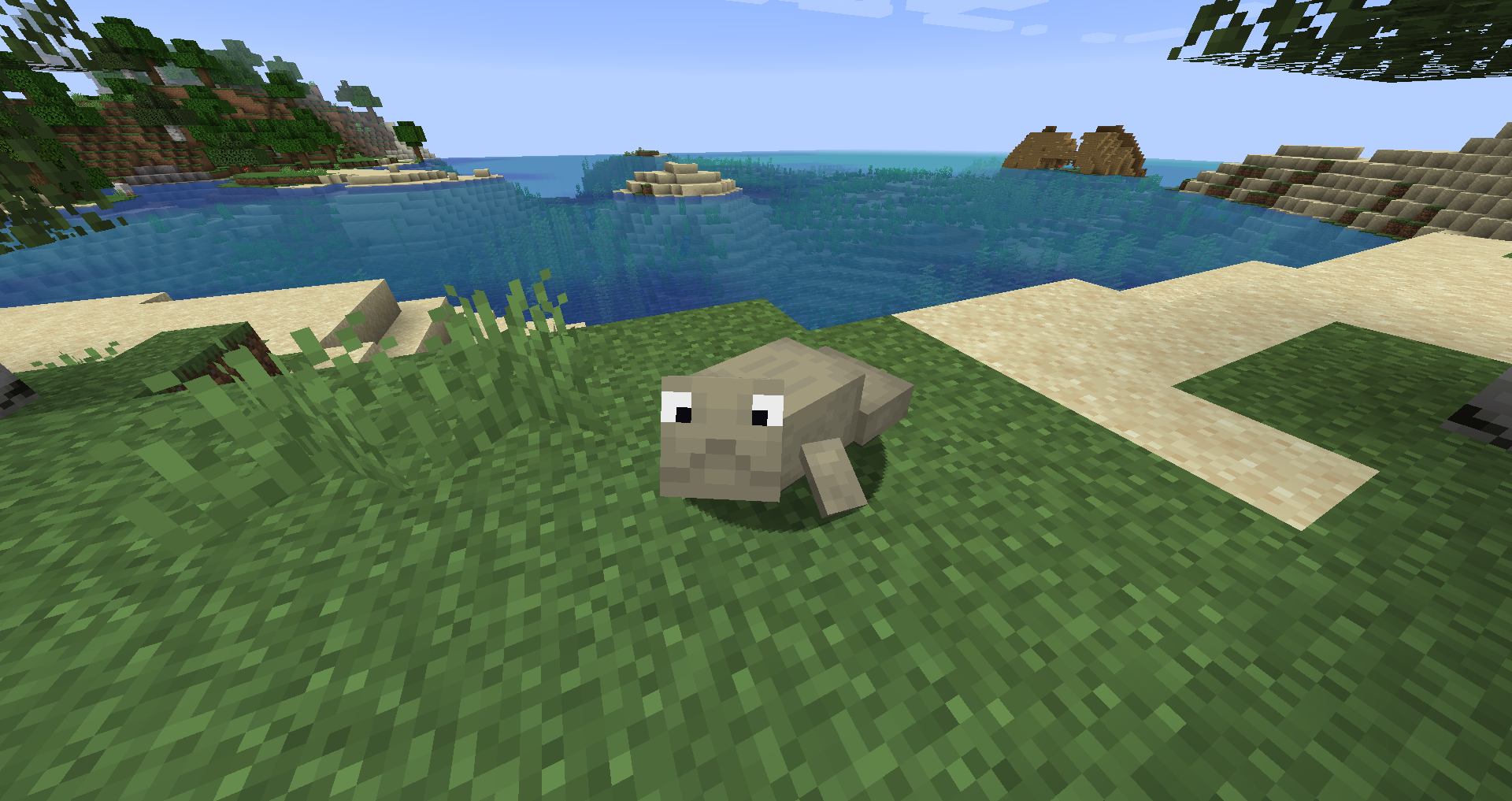 Plumpers are plump seal-like creatures inhabiting coastlines. Their blubber can be used as weak fuel or substitute for tallow (Rustic, Better With Mods, Quark), wax (Rustic), or pressed wax (Pam's Harvestcraft). Breed with any fish (raw or cooked).
Plumpers are plump seal-like creatures inhabiting coastlines. Their blubber can be used as weak fuel or substitute for tallow (Rustic, Better With Mods, Quark), wax (Rustic), or pressed wax (Pam's Harvestcraft). Breed with any fish (raw or cooked).
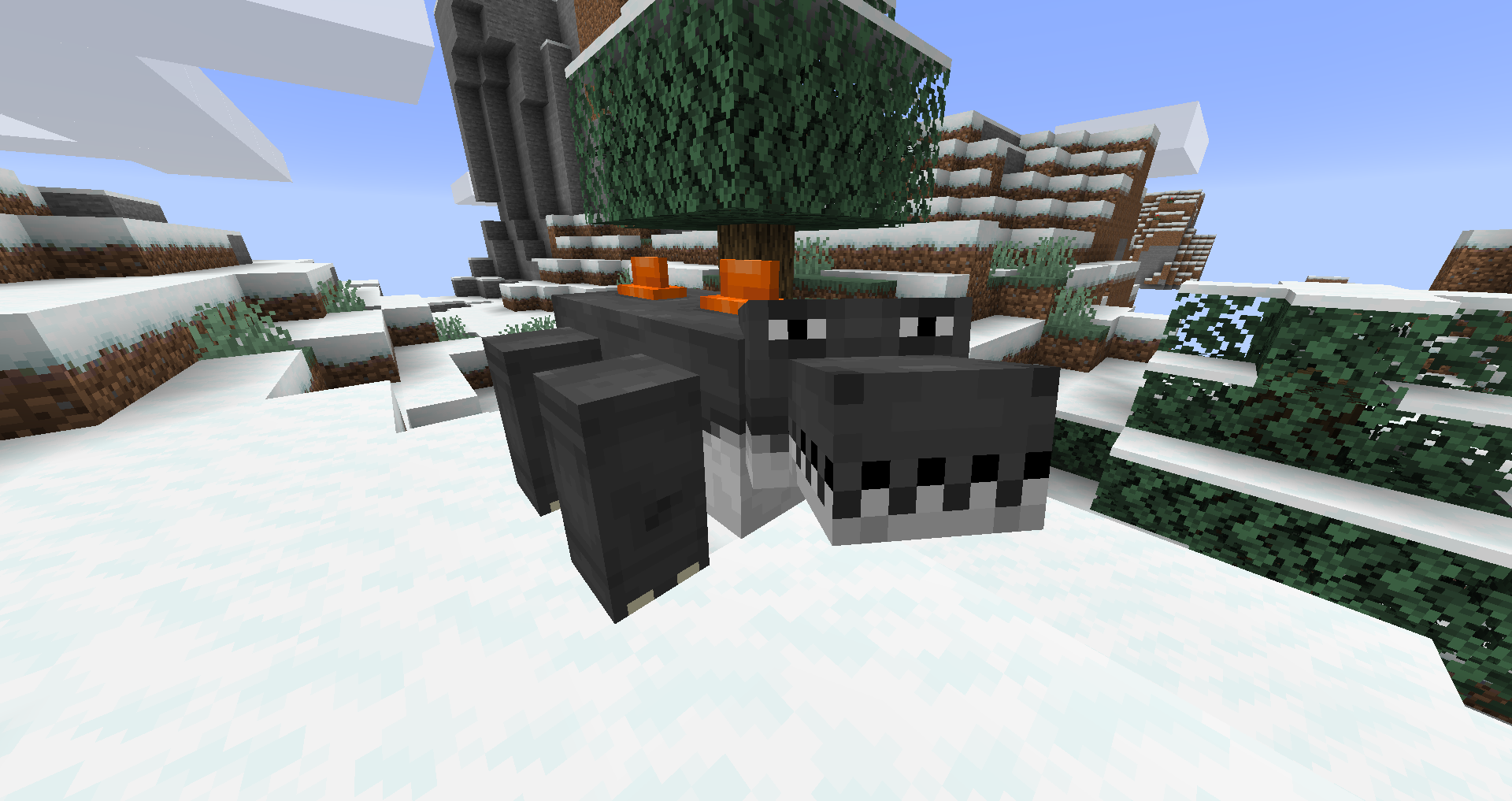 Vrontausauruses are the largest representatives of fluffy lizards. Live in mountains and generate static electricity with their fur, which can shock during grooming. Don't attack them - they fight back and bite hard. Grooming allows collecting fur. Breed with pork, beef, or mutton (raw or cooked) during rain.
Vrontausauruses are the largest representatives of fluffy lizards. Live in mountains and generate static electricity with their fur, which can shock during grooming. Don't attack them - they fight back and bite hard. Grooming allows collecting fur. Breed with pork, beef, or mutton (raw or cooked) during rain.
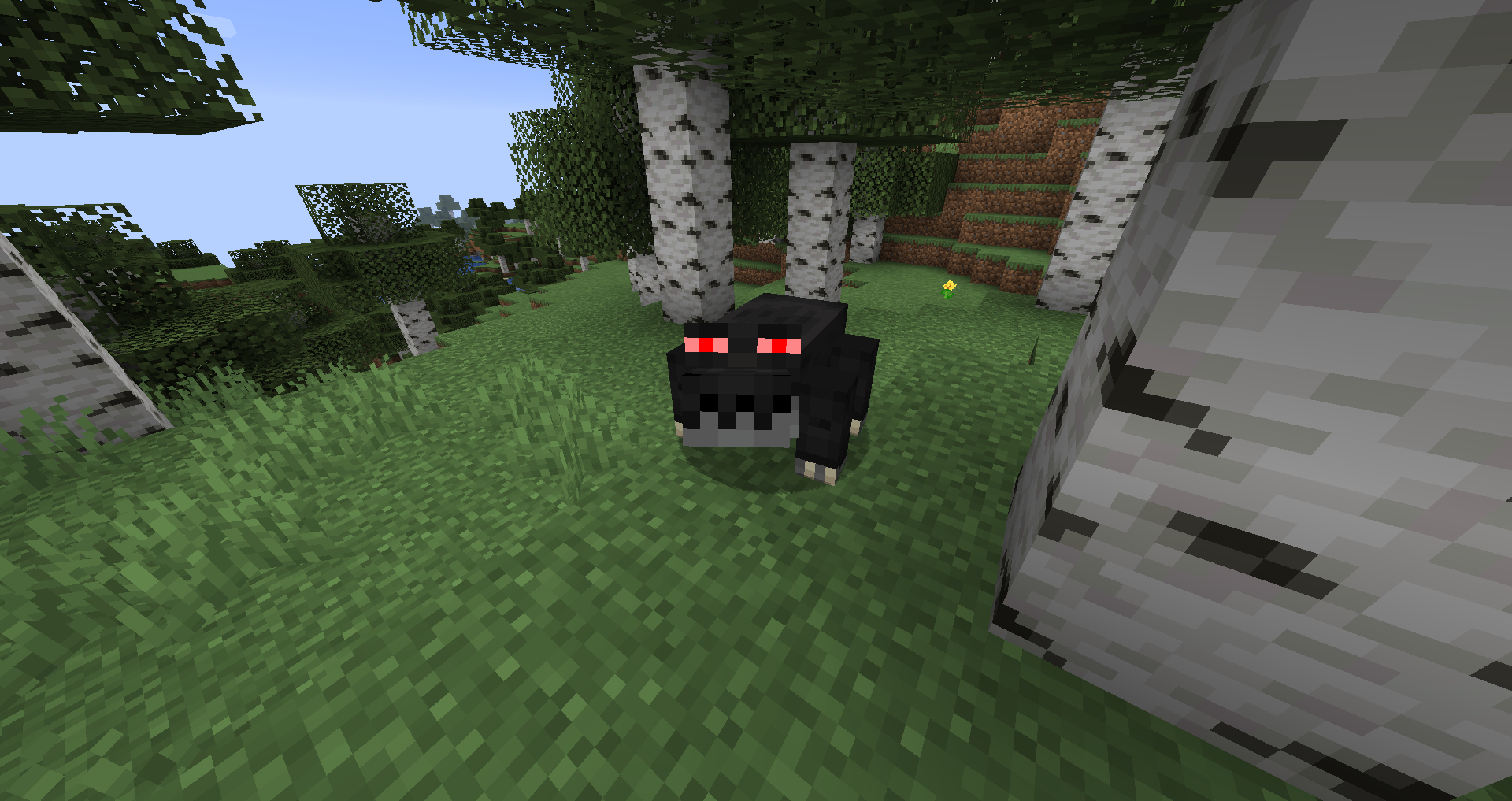 Dusk Lurkers are smaller and more timid fluffy lizards inhabiting forests. Dislike approach without food but watch players with glowing eyes. Their fur produces thick black dust when groomed, serving as an excellent source of black dye. Breed with rabbit or cicaptera (raw or cooked) at night.
Dusk Lurkers are smaller and more timid fluffy lizards inhabiting forests. Dislike approach without food but watch players with glowing eyes. Their fur produces thick black dust when groomed, serving as an excellent source of black dye. Breed with rabbit or cicaptera (raw or cooked) at night.
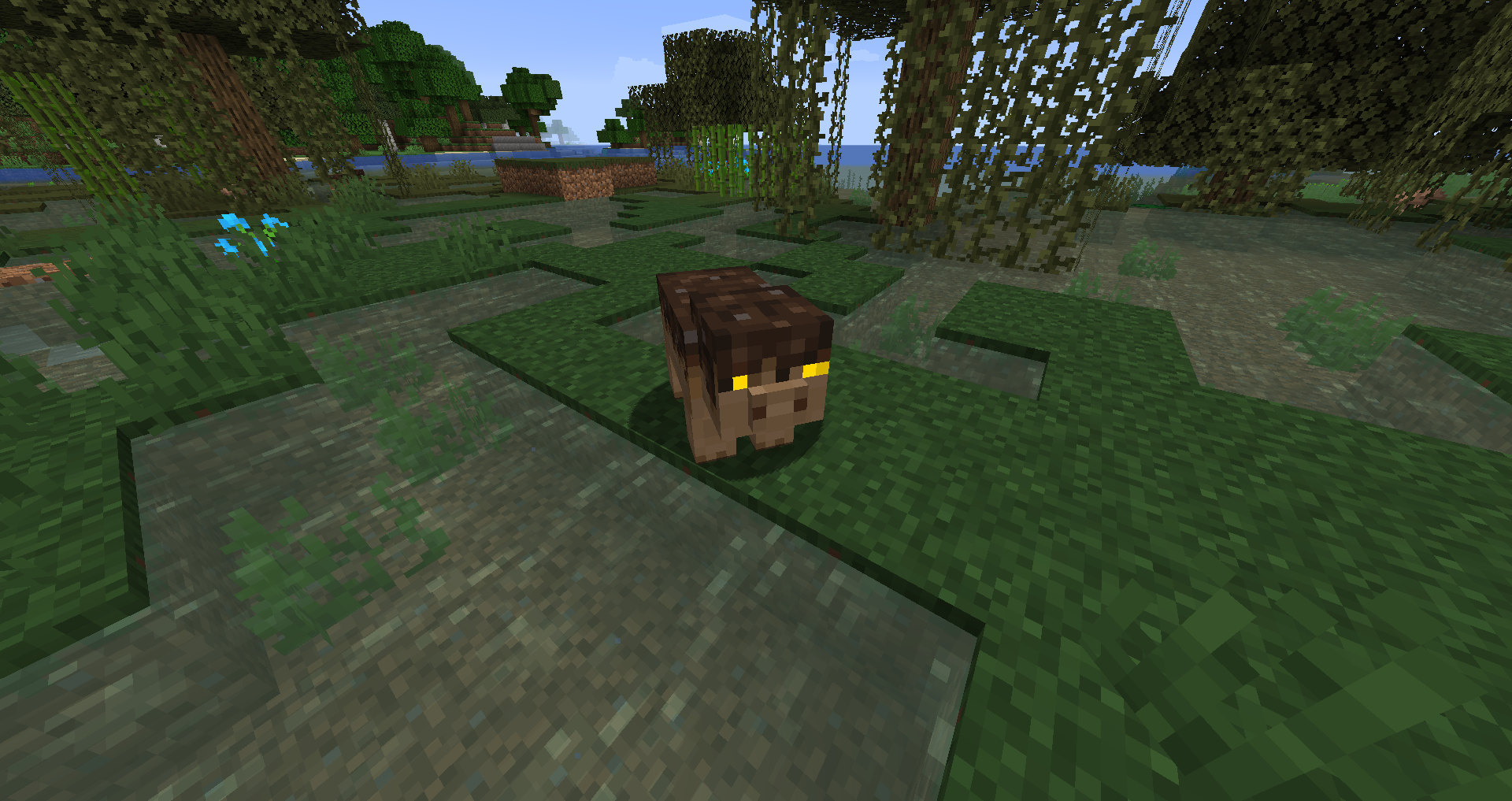 Yaga Hogs are a rare pig breed thriving in swamps. Unlike pinker cousins, release poison clouds when attacked for defense, so try killing from distance. Dirt on their backs can be groomed off. Breed with bread.
Yaga Hogs are a rare pig breed thriving in swamps. Unlike pinker cousins, release poison clouds when attacked for defense, so try killing from distance. Dirt on their backs can be groomed off. Breed with bread.
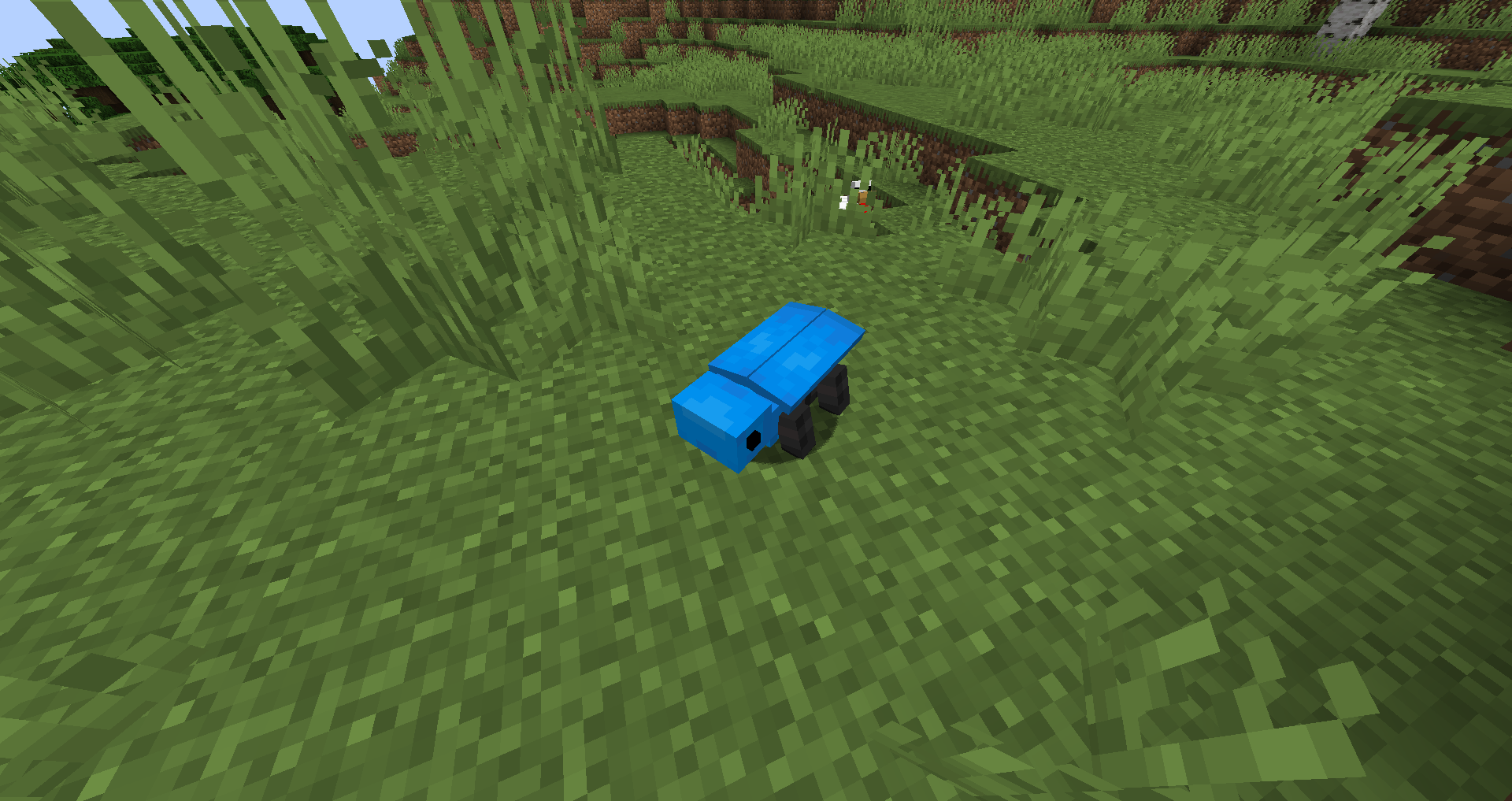 Azure Cicapteras live on plains and recognized by blue shells. Their casings serve as good replacement for lapis lazuli-based dyes (blue) for decorative purposes. Breed with any vanilla seeds.
Azure Cicapteras live on plains and recognized by blue shells. Their casings serve as good replacement for lapis lazuli-based dyes (blue) for decorative purposes. Breed with any vanilla seeds.
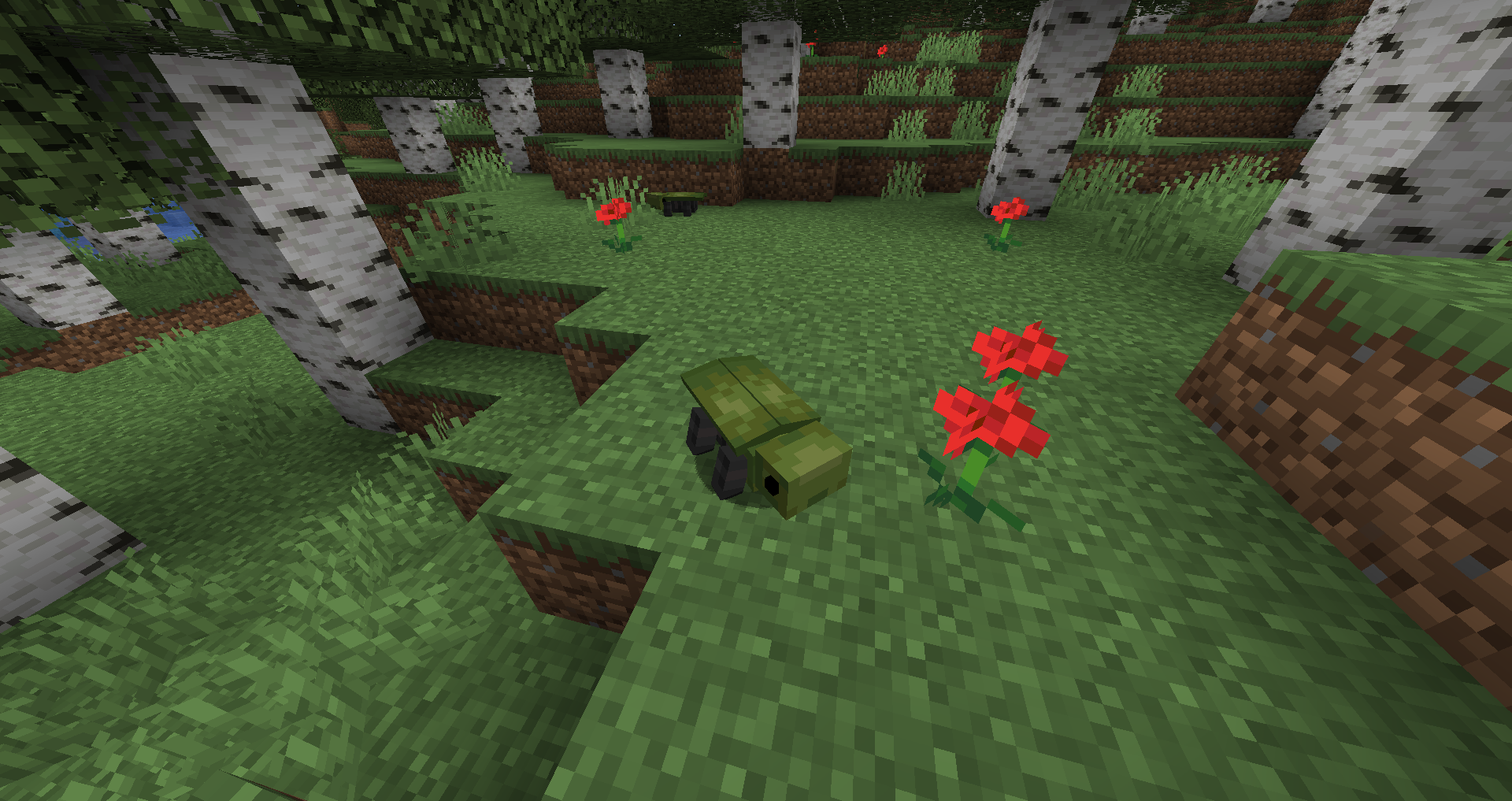 Verdant Cicapteras inhabit forests and have dark green shells. Their casings can replace cactus-based dyes (green). Breed with apples.
Verdant Cicapteras inhabit forests and have dark green shells. Their casings can replace cactus-based dyes (green). Breed with apples.
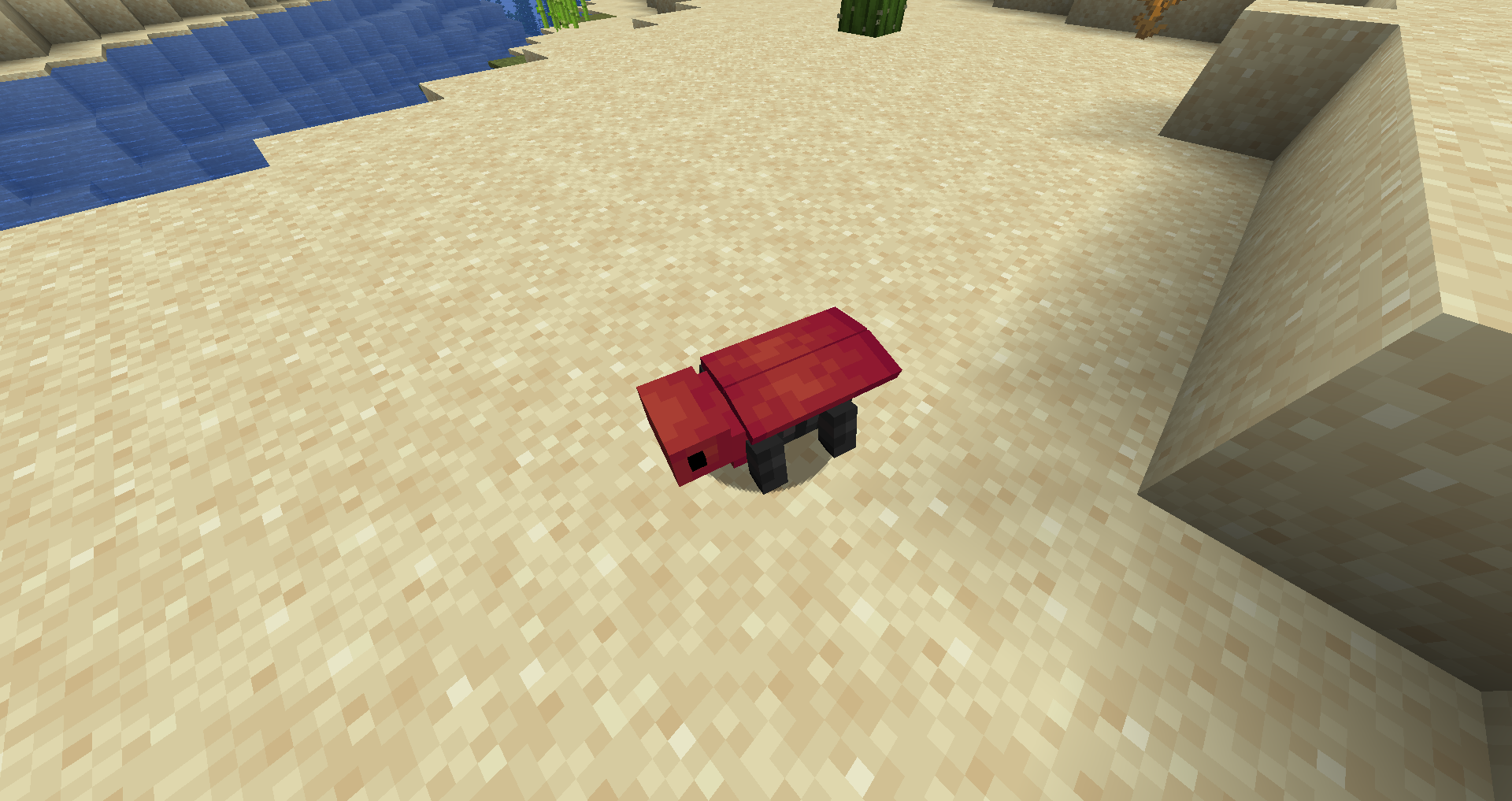 Crimson Cicapteras populate hot biomes and distinguished by signature red shells. Unlike other cicapteras, attack when threatened, ramming opponents at high speed. Their casings are a risky but effective source of red dye. Breed with cactus.
Crimson Cicapteras populate hot biomes and distinguished by signature red shells. Unlike other cicapteras, attack when threatened, ramming opponents at high speed. Their casings are a risky but effective source of red dye. Breed with cactus.
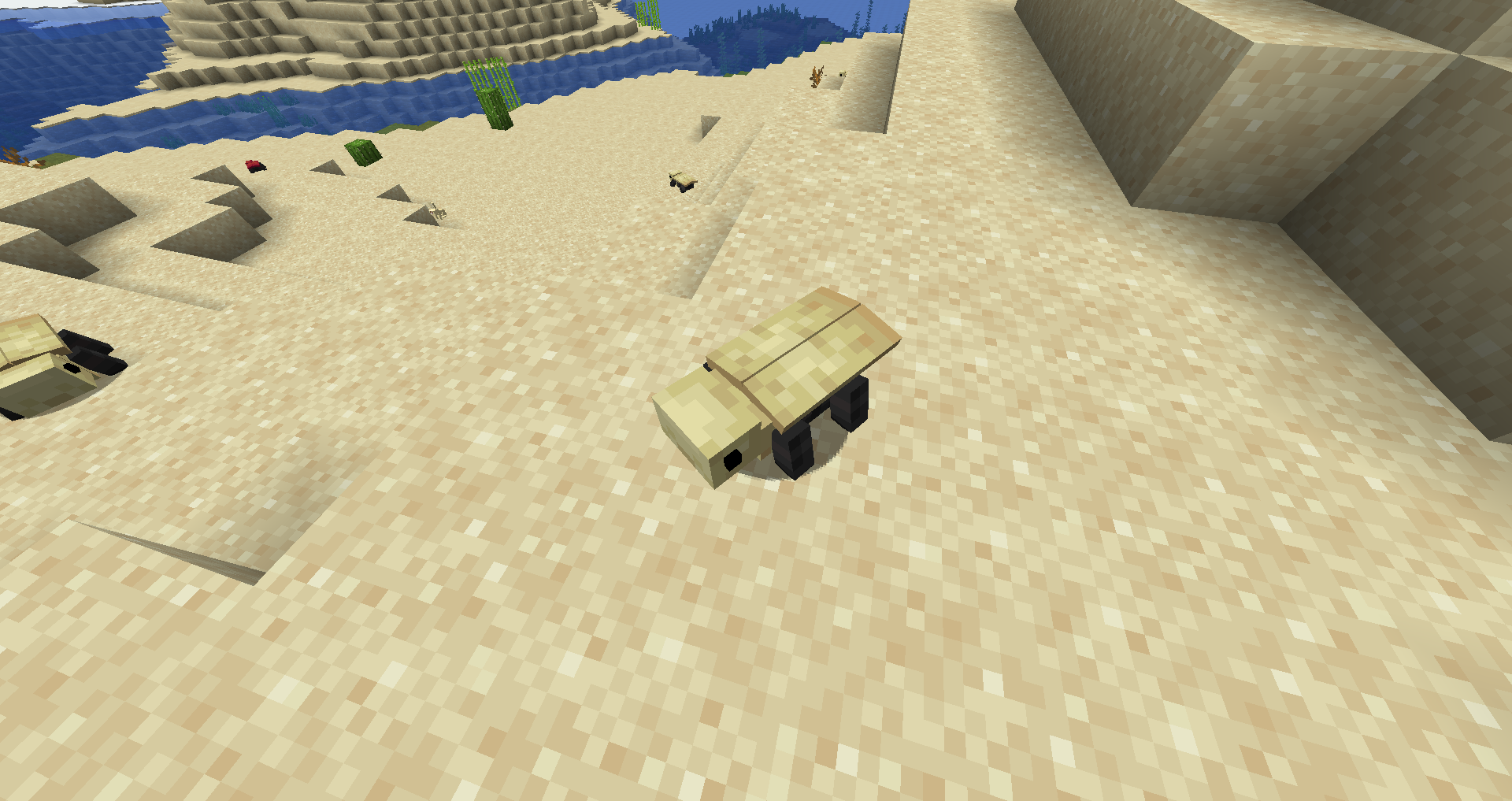 Sandy Cicapteras are most commonly found in deserts. Their sand-colored shells make them hard to spot and serve as a source of yellow dye. Breed with cactus.
Sandy Cicapteras are most commonly found in deserts. Their sand-colored shells make them hard to spot and serve as a source of yellow dye. Breed with cactus.
 Wintry Cicapteras inhabit snowy biomes where white shells provide excellent camouflage. Their casings are a superior source of white dye, much safer than skeleton hunting. Breed with any vanilla seeds.
Wintry Cicapteras inhabit snowy biomes where white shells provide excellent camouflage. Their casings are a superior source of white dye, much safer than skeleton hunting. Breed with any vanilla seeds.

